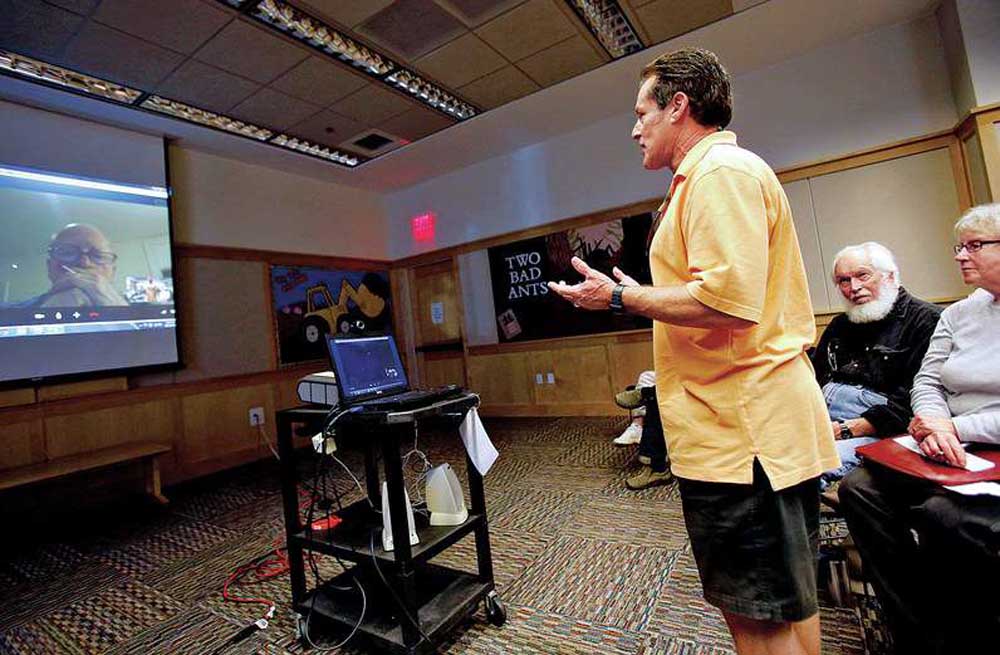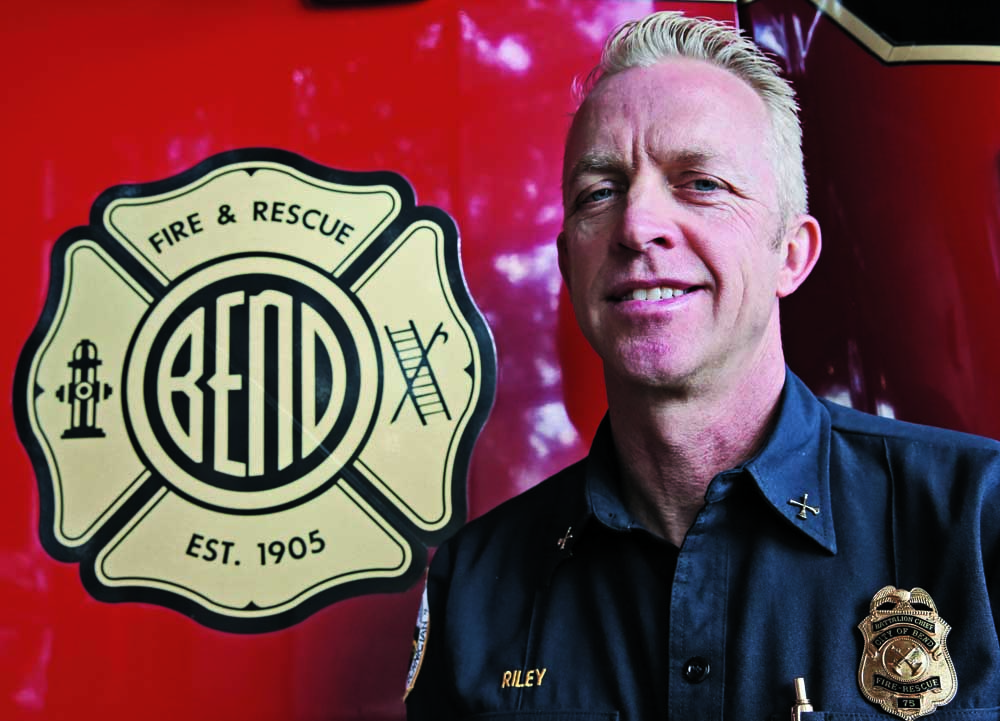Discussing the Constitution
Published 5:00 am Monday, October 7, 2013

- Scott Robinson asks a question of Harvard Law professor Mark Tushnet, communicating via Skype, during the “Let's Talk About It: Making Sense of American Constitutionalism” series kickoff Sunday at the Downtown Bend Public Library.
On Sunday locals had the chance to question a Harvard Law professor about the U.S. Constitution and how its interpretation affects life in Central Oregon.
Though the Skype feed transmitting Mark Tushnet’s image into the Downtown Bend Public Library was somewhat grainy, the Harvard professor’s lecture on what he terms the “thick” and “thin” parts of the Constitution came through clear.
Tushnet was the guest of Oregon State University-Cascades Campus professor James Foster, who is leading a five-part series, “Let’s Talk About It: Making Sense of American Constitutionalism.” Over the course of two months, the group will discuss how topics such as guns, religion and gender are seen in light of our nation’s supreme law.
“These are hot-button issues, and people will come with strong opinions,” Foster said. “The trick will be facilitating conversations. We are lucky to have Mark for our keynote; he has a C.V. the size of a small metropolitan area phonebook, if such a thing still existed.”
Foster and Tushnet have collaborated and visited each other’s classes over the years, though Foster admits he will be sending his friend half a case of pinot from Bethel Heights to thank him for his help.
“When I think about the Constitution’s role in public life, I divide it into two parts,” Tushnet told the audience of two dozen. The “thin” Constitution, he explained, “contains the things that we are committed to by principle like justice, liberty and fairness and which motivate a citizen’s attachment to the document.”
The “thick” Constitution describes the system by which politicians govern and take power, touching on subjects such as the electoral college and our bicameral legislature.
“Most people think about the thin constitution, but the thick is more important for our political life,” Tushnet said. “What the thin Constitution means is influenced by our two-party system, which is a product of the thick Constitution.”
Jim Stirnaman, 69, came to the event because he was puzzled by the “thin” Constitution.
“I look at the preamble and it looks to me like a mission statement,” he said. “But there are all these different goals, so the question is, how do we prioritize them? To ‘provide for the common defense’ is on there fourth, but it’s where we spend all our money, so what does that mean?”
Gladys Biglor, 61, was hooked by one of Foster’s intentionally provocative discussion titles, “Guns as Cultural Symbols.”
“They’re not symbols,” Biglor said. “They are tools protected by the Constitution. I found it intriguing to term them as symbols.”
Ron Lattin was less provoked than curious, joking, “I’m 84, so I think it’s about time I learned what the Constitution said.”
While the series is currently full, the library plans to offer the same program again at a later point.







